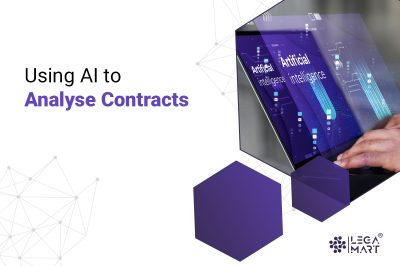The article is written by Elinah makungu
Introduction
The digital economy is defined as the establishment of diverse economic activities such as creating, adapting, marketing and consuming goods and services, using Information Technology as a critical factor of production. This feat is achieved using digital technologies such as websites, computers and media to collect, analyze, store and share information that promotes digital progression.
Through a digital passage, opportunities such as developing new business models and processes, innovation and intelligent products and services can be exploited.
Individuals such as scientists, artists and inventors invest most of their energy, money and time in developing their creations and innovations to facilitate digital advancement. Therefore, a fair return on their investment is fundamental, which can be made through Intellectual Property (IP). Intellectual property refers to creations of the mind; thus, Intellectual Property rights (IPRs) such as trademark, copyright, patents and trade secret are regarded as intangible assets and equally demands protection like other property rights.
The digital economy thrives in internet use; therefore, most systems that allow the internet to function, such as software, designs, routers and networks, are elements of IP and can be capitalized through IP protection.
Consequently, IP is the value traded in most online transactions, which demands a clear understanding of what category of IPRs to be protected. Such protection boosts efficacy in online engagements and enhances the value of online businesses; lack thereof can increase pirating or stealing. By granting protection, IP owners get an exclusive right to exploit their IP assets, and in case of infringement, the owner is entitled to take action to enforce their IP rights.
Intellectual Property in the Digital Economy(E-Commerce and Online businesses)
E-commerce is the process of buying and selling products electronically by the use of the internet. The digital world has provided several IPRs to be traded using e-commerce platforms; an example of such e-commerce elements includes; – website database, design and contents such as writings, videos and photographs, which are protected by copyright; website software is protected by patent or copyright; product names, logos and brand names are protected by trademark; and, website’s hidden details such as algorithm, technical description, confidential graphics and source code can be covered by trade secret.
Having IP laws and practices in place to protect such elements allows constant online functionality. In addition, it safeguards online business interests against the unfair competition through theft, duplication or distribution of IPRs without the owner benefiting from their work.
IP in Branding and Domain name
In e-commerce businesses, traders may be remotely located, thus limiting physical contact that reassures customers of the businesses’ financial security and good faith. Besides, customers are naturally cautious when dealing with an online environment, mainly where online identity is unclear.
Therefore, branding and customer recognition is an essential parts of e-commerce. Thus, companies must protect their online identities, such as brands, logos, slogans and product names, using IPRs such as trademarks or unfair competition laws to gain customers’ publicity, loyalty and trust. In addition, the registration and consistent use of a brand create customer recognition.
On the other hand, a brand can be registered as a domain name where the internet domain name system facilitates online users to navigate to various business sites, creating an identity of such business on the internet. Therefore, domain names and trademarks act as business identifiers in e-commerce and online business. As such, websites should be cautious when choosing a domain name so that it does not conflict with the trademark rights of other companies.
IP in Websites
Websites contain various features, including graphics, algorithms and programs, technical descriptions, object and source codes, logic and data flow charts, user manuals, data structures and databases; all these features are protected using different IPRs. For example, a search engine is a software system that helps in tracking down information on web pages; the same is protected either by utility model or patent; a database can be protected by copyright based on the data content, different data elements and data organization; and either patent or copyright can cover a website software.
Protection of a website depends on various website elements and related IPRs, by registering either; – trademark, domain name, patent of business methods or copyright of the website materials. By doing this, website owners inform online users that their website is protected.
Furthermore, website owners can publicly display their IP rights, for example, by use of trademark symbols like TM or SM to mark their trademark; use of a watermark on digital copyright information; use of copyright notice like the word “Copyright” or symbol © or the abbreviation Copr.” followed by the owner’s name and year of publication; or put a public notice that the website is patented either with the word “patent” or “pat” label at the end of the homepage.
Intellectual property infringement happen the most through social media channels as people market their products, website launches along with other uniquely developed content.
IP and Linking, Framing and Meta Tags
Hyperlinks
A hyperlink is a Hypertext Markup Language (HTML) that grants online users a direct connection to other websites and retrieves information quickly and straightforwardly. However, enabled access to web pages outside the site can raise IP issues. For example, some links can lead to sites with pirated songs, illegal software programs, or links containing another company’s logo that may violate the company’s trademark or unfair competition laws.
Framing
Framing operates where the website owner divides their website into separate framed sections such that another person’s site is displayed in the website owner’s site within a frame. In this case, the online user is linked to someone else’s website without revealing that the content accessed is from another website. This can create controversy since it gives an impression to online users that the information being displayed belongs to the website doing the framing and can infringe on the copyrights of other protected sites.
Trademark Infringement on Meta Tags
Meta Tags are keywords inserted in a website’s HTML code to be read by search engines to make search engines efficient using the information provided by website developers. However, where a website developer inserts, for example, a trademark or name of a competing company in its metatag, it can be considered deceptive use of another company’s trademark in the metatag. Therefore, it may constitute unfair competition or trademark infringement.
Detecting online IP infringement
Online violators can be tracked by:
- Conducting random searches using a search engine like Google;
- Use technologies such as “fingerprints” to identify customers who have broken license agreements; or “spider programs”, which help search the internet for information copied from the site.
Conclusion
In today’s digital economy, intellectual property holds significant value, especially in the context of international trade and innovation. The rise in internet use has caused an upsurge in the illegal use of IPRs due to the ease with that materials can be copied or downloaded from sites leading to unauthorized or illicit downloads of software, photos, music, scripts and films, among other materials which violate various national IP laws in place. Therefore, protecting IPRs, including trademarks, is crucial for businesses seeking global expansion. For instance, companies can pursue the international registration of trademarks in the US through the Madrid Protocol, providing them with added protection and recognition.
Furthermore, the digital world requires effective Intellectual Property Laws to achieve fairness and ethical compliance in online transactions. Furthermore, having proper IP laws guarantees adequate protection of IPRs and will encourage healthy competition in the digital economy.




